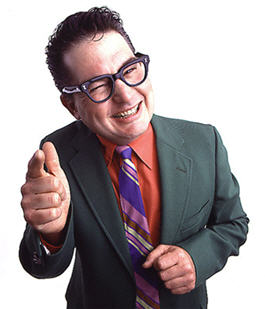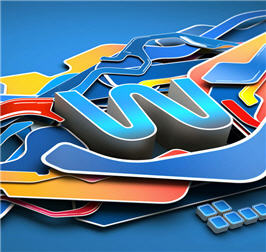How to Teach Descriptions


Students may not often use shapes in their everyday conversation or English lessons but it is still worth teaching your students certain basic shapes especially if you are going to tell them to “Circle the correct answer.” on their worksheets or exams. Knowing basic shapes can also be useful when students try to explain objects that they do not know the word for because if they can describe something accurately enough, you will be able to give them the correct vocabulary word. This article provides some ideas and activities on teaching shapes to preschool and kindergarten kids and teenagers.
Warm up
Shapes are another topic for very beginners so it is worth spending time reviewing the previous lesson. If you choose to do the production activity suggested in this lesson, you may want to devote some time to reviewing numbers, description words and body parts as well. You can simply ask students to name the body part or number you are pointing to as a class or by volunteering. You can also review all this vocabulary using flashcards or by eliciting vocabulary from your students to see what they can remember. Warm up activities for beginning students may take up to ten minutes of your class time depending on how much material you feel the need to include. When it comes to vocabulary, repetition is the key.
Introduce Shapes
Drawings on the board or flashcards will be the easiest way to introduce shapes. You may choose to only teach square, rectangle, circle, and triangle but feel free to include other vocabulary such as star and diamond if appropriate. Use choral repetition for pronunciation practice and drill by pointing to the drawings on the board or using flashcards. If you are only using basic shapes and working with young learners, have them make the shapes using specific hand gestures as they practice the words. This will help reinforce what the new words mean.
Practice Shapes
After practicing the vocabulary as a class, have students practice writing the words by labeling images on a worksheet or making sentences for each image. For example, if there is a picture of a circular clock, students can write “It’s a circle.” while if there is an image of a photograph, students can write “It’s a rectangle.” You can also continue practicing as a class by naming familiar objects or objects in the classroom and having students tell you what shape they are. Students should be encouraged to use full sentences when responding to these questions.
Produce
At this stage in the lesson students should be able to produce their own material. You could have them write as many objects as they can think of for each shape, for instance. You could also conduct an activity which combines students’ knowledge of shapes, numbers, descriptions and body parts. Assuming you have covered all of these topics, you can do this activity called Monsters. Have students work in pairs sitting back to back. First give students time to draw a monster on the top half of their worksheets. Student A will then describe his monster to his partner while Student B listens to the description and draws a monster based on the description he is given. Students will say sentences such as “He/She/It has one small nose. It’s a circle.” When Student A is finished describing his monster, students should switch roles. When both partners have described and drawn a monster, have students compare their drawings. It is amusing to see how different they are even if students were listening carefully.
Review
If possible, it may be fun to get the class moving and working together. In the last minutes of class have students position themselves to create the shape you call out. For example, if you say “Triangle.” students should try to organize themselves into a triangle. It may be a bit of a challenge but depending on the class, may be quite enjoyable as well. It is good to conduct activities, such as this one, which require cooperation among your students.
Shapes may not be the most important section of material that students study and this vocabulary is unlikely to come up repeatedly in the course but teaching basic shapes is still necessary. Later on when students are taught the adjective form of these words, such as circular and triangular, at least they will be building upon previously learned material.